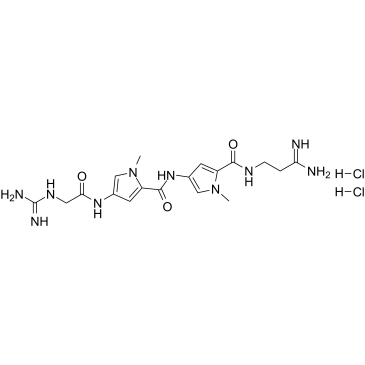Overexpression of HMGA1 deregulates tumor growth via cdc25A and alters migration/invasion through a cdc25A-independent pathway in medulloblastoma.
Kin-Mang Lau, Queeny Kwan Yi Chan, Jesse C S Pang, Fanny Man-Ting Ma, Kay K W Li, Walter Wai Yeung, Alfred S L Cheng, Hai Feng, Nellie Y F Chung, Hiu-Ming Li, Liangfu Zhou, Yin Wang, Ying Mao, Ho-Keung Ng
Index: Acta Neuropathol. 123(4) , 553-71, (2012)
Full Text: HTML
Abstract
Overexpression of high mobility group AT-hook 1 (HMGA1) is common in human cancers. Little is known about the mechanisms underlying its deregulation and downstream targets, and information about its clinical and biological significance in medulloblastoma (MB) is lacking. Here, we demonstrated frequent genomic gain at 6p21.33-6p21.31 with copy number increase leading to overexpression of HMGA1 in MB. The overexpression correlated with a high proliferation index and poor prognosis. Moreover, we found that hsa-miR-124a targeted 3'UTR of HMGA1 and negatively modulated the expression in MB cells, indicating that loss/downregulation of hsa-miR-124a reported in our previous study could contribute to the overexpression. Regarding the biological significance of HMGA1, siRNA knockdown and ectopic expression studies revealed the crucial roles of HMGA1 in controlling MB cell growth and migration/invasion through modulation of apoptosis and formation of filopodia and stress fibers, respectively. Furthermore, we identified cdc25A as a target of HMGA1 and showed that physical interaction between HMGA1 and the cdc25A promoter is required for transcriptional upregulation. In clinical samples, HMGA1 and cdc25A were concordantly overexpressed. Functionally, cdc25A is involved in the HMGA1-mediated control of MB cell growth. Finally, netropsin, which competes with HMGA1 in DNA binding, reduced the expression of cdc25A by suppression of its promoter activity and inhibited in vitro and in vivo intracranial MB cell growth. In conclusion, our results delineate the mechanisms underlying the deregulation and reveal the functional significance of HMGA1 in controlling MB cell growth and migration/invasion. Importantly, the results highlight the therapeutic potential of targeting HMGA1 in MB patients.
Related Compounds
| Structure | Name/CAS No. | Molecular Formula | Articles |
|---|---|---|---|
 |
Netropsin dihydrochloride
CAS:18133-22-7 |
C18H28Cl2N10O3 |
|
Free energy calculations offer insights into the influence o...
2011-08-01 [J. Comput. Aided Mol. Des. 25(8) , 709-16, (2011)] |
|
Polyamide-scorpion cyclam lexitropsins selectively bind AT-r...
2011-01-01 [PLoS ONE 6(5) , e17446, (2011)] |
|
DNA site-specific N3-adenine methylation targeted to estroge...
2011-09-01 [Bioorg. Med. Chem. 19 , 5093-102, (2011)] |
|
Comparison of binding sites in DNA for berenil, netropsin an...
1987-09-01 [Eur. J. Biochem. 167 , 281, (1987)] |
|
[Estimation of activity of bis-netropsin derivatives based o...
2013-01-01 [Vopr. Virusol. 58(1) , 32-5, (2013)] |